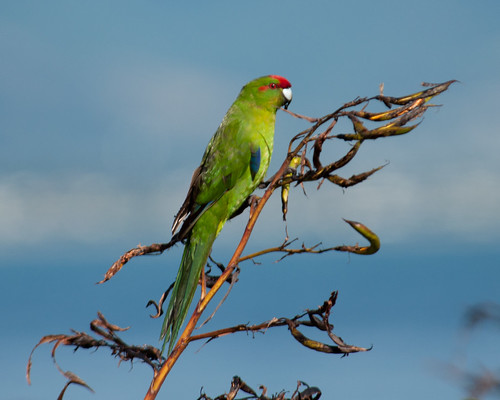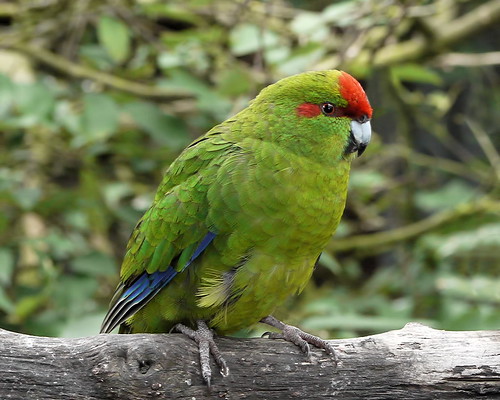Kakariki get island home
 Friday, September 7, 2012 at 13:32
Friday, September 7, 2012 at 13:32
 Friday, September 7, 2012 at 13:32
Friday, September 7, 2012 at 13:32  Wednesday, June 13, 2012 at 23:42
Wednesday, June 13, 2012 at 23:42  Collaborative study on BFDV found the potentially fatal parrot disease in red-fronted parakeets Researchers at the University of Canterbury have found two threatened native parrot species are at risk from Beak and Feather Disease Virus (BFDV), which has been discovered in the South Island for the first time.
Collaborative study on BFDV found the potentially fatal parrot disease in red-fronted parakeets Researchers at the University of Canterbury have found two threatened native parrot species are at risk from Beak and Feather Disease Virus (BFDV), which has been discovered in the South Island for the first time.
 Thursday, March 29, 2012 at 14:28
Thursday, March 29, 2012 at 14:28  DEVASTATING EFFECTS: A healthy red-fronted parakeet provides sharp contrast to a bird severely affected by the beak and feather virus.Researchers at Auckland Zoo are trying to understand a virus that is affecting native parrots and spreading through the country.
DEVASTATING EFFECTS: A healthy red-fronted parakeet provides sharp contrast to a bird severely affected by the beak and feather virus.Researchers at Auckland Zoo are trying to understand a virus that is affecting native parrots and spreading through the country.
Beak and feather disease was found in kakariki parrots in 2008 and this year has turned up in the South Island for the first time.
The virus seemed to be confined to introduced parrots until it appeared four years ago in the Hauraki Gulf.
In January, it appeared in Fiordland in a second species of kakariki, which is also known as the New Zealand parakeet.
 Friday, December 2, 2011 at 13:10
Friday, December 2, 2011 at 13:10 Prolific on Matiu Somes Island. Kakariki is also known as the red-crowned parakeet (Cyanoramphus novaezelandiae). Image by Peter HodgeBehind closed doors the Long Bay College wood technology class is undertaking a unique project in the name of conservation.
 Thursday, December 2, 2010 at 11:00
Thursday, December 2, 2010 at 11:00  This Kākāriki or Red-crowned Parakeet (Cyanoramphus novaezelandiae) was photographed at Nga Manu Reserve, near Waikanae. Photo: Sid MosdellThe presence of a stoat on Kapiti Island has been confirmed, with the animal’s DNA found on faecal matter (scat) and a dead parakeet/kakariki that was about three weeks old, found by mustelid detection dog Crete and his handler Scott Theobold last week.
This Kākāriki or Red-crowned Parakeet (Cyanoramphus novaezelandiae) was photographed at Nga Manu Reserve, near Waikanae. Photo: Sid MosdellThe presence of a stoat on Kapiti Island has been confirmed, with the animal’s DNA found on faecal matter (scat) and a dead parakeet/kakariki that was about three weeks old, found by mustelid detection dog Crete and his handler Scott Theobold last week.